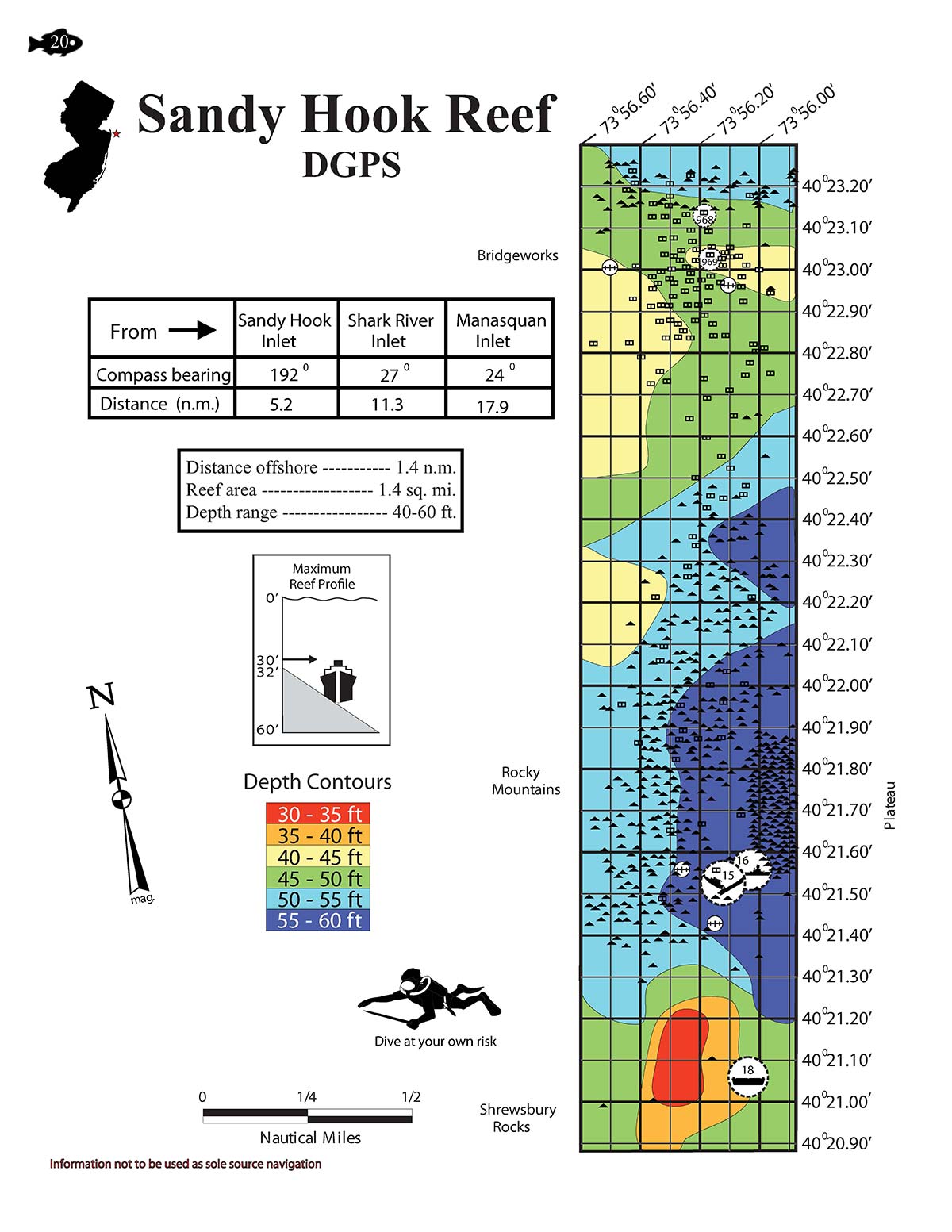Known as New Jersey’s oldest reef site, the Sandy Hook Reef’s first deposits were taken in 1937, so it’s had plenty of time for marine growth to latch onto and grow. Roughly 11.3 miles from Shark River, 17.9 miles from Manasquan and 5.2 miles from Sandy Hook, the Sandy Hook Reef spans depths from 40 to 60 feet.The reef is pretty close to the shoreline at 1.4 miles off the Sea Bright coast, and the span of the reef encompasses 1.4 miles. An incredible amount of concrete and rock rubble comprises the entirety of the site, (over 1,000 rock piles) providing myriad nooks and crannies for bottomfish such as tog, sea bass, porgies and ling to patrol as well as for sea anemones to root and crabs to burrow into.
A majority of the rubble piles exists on the north end while the south end holds the bulk of the jettisoned ships, including the 110-foot tanker VL Keegan, 65 tug Dorothy, and the 45-foot barge Coleman. The most recent addition, the 65-foot tugboat Vinik Huntress was sunk in 2020 in memory of Hudson River Fishermen’s Association past member Darren Cardinal. Sponsorship for this project is provided by the association and The Sportfishing Fund. Pre-existing wrecks of the area include the wooden wreck of the Pocono and steamer ship Macedonia.

The place is all about the rock piles as the debris field of concrete spilled over the body of the site is accentuated by an intimidating set of submarine glacial rocky mountains that are anchored into the east and southeast corner. A good tactic to employ is to locate areas where the piles overlap and create clumps that rise higher than 6 feet as porgies will hang around them like ornaments on a Christmas tree.
Those large rock piles are lights out for blackfish from May through November, while summertime holds a cavalcade of species such as black sea bass, fluke and ling around the rocks. The southern end shipwrecks at Sandy Hook Reef will hold larger blackfish that tend to root into the metal hulls and boiler areas while the wrecks also provide low relief structure for doormat fluke up to 10 pounds to stage and ambush prey as it wafts by with the tidal currents.
V.L. Keegan 40° 21.525 / 73° 56.110
Dorothy 40° 21.555 / 73° 56.103
Coleman Barge II 40° 21.060 / 73° 56.125
Vinik Huntress 40° 21.541 / 73° 56.006
Since the reef lies within 3 miles, it’s also a great place to intercept striped bass and bluefish schools from spring through fall. Troll shad bars, bunker spoons and mojos for bass, also drop diamond jigs for big blues. Another selling point of the Sandy Hook Reef is that it is situated just northwest of the prolific Shrewsbury Rocks, so a day out on the reef can be turned from a bottom fishing trek to a striped bass trolling adventure in an instant.
Put the Sandy Hook Reef on your hit list this year. It’s a go-to spot to pull on a wide variety of Jersey species.


